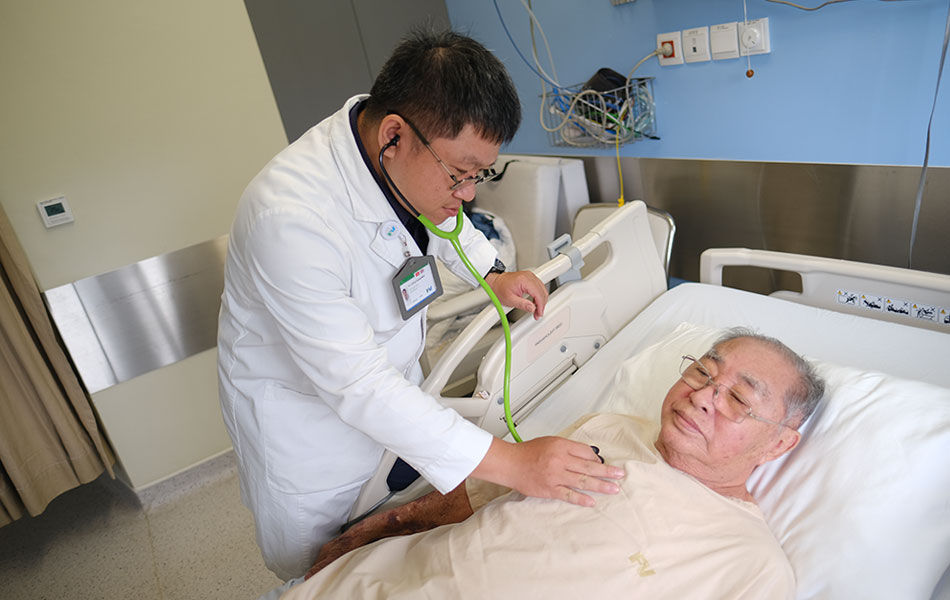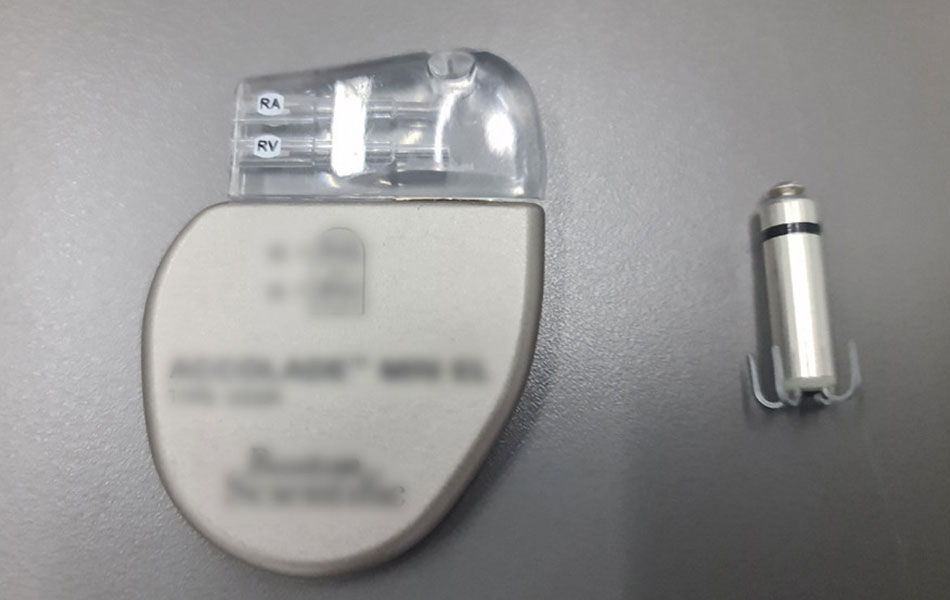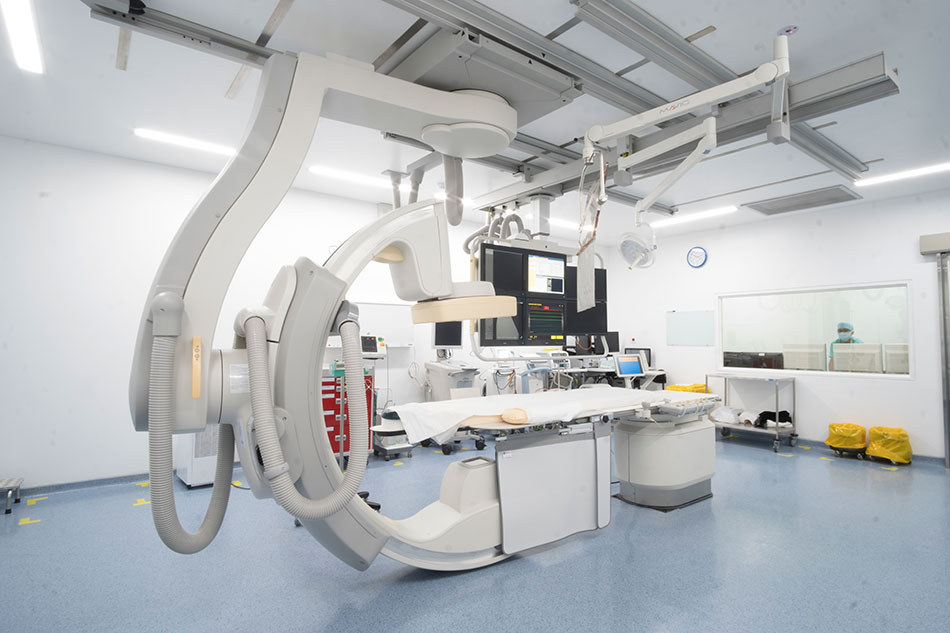FV Hospital has successfully implanted a wireless pacemaker for an 88-year-old patient. There are two types of wireless pacemakers: single-chamber ventricular pacing (P) and an optimal wireless version which can stimulate both the atrium and the ventricle. Mr N.V.N is the first patient in Vietnam to receive the latter type of pacemaker the most technologically advanced model available in Vietnam, which offers outstanding advantages in controlling cardiac arrhythmias.
Staying out of danger, thanks to a pint-sized pacemaker
Mr N.V.N. (88 years old, from Dong Nai) suffered from bradycardia. He often felt lightheaded and had difficulty breathing. He walked unsteadily, and sometimes fainted. The patient had multiple follow-up visits, and bradycardia was noted in his medical history. He also was also experiencing intermittent bradycardia symptoms. When his condition worsened, Mr N.’s family brought him to FV hospital.
During examination, Dr Hoang Quang Minh, Senior Consultant, Cardiology, FV Hospital, found that the patient had two heart diseases at the same time: sick sinus syndrome and second-degree atrioventricular block. Together, they caused the patient’s heart rate to slow a condition which can be life-threatening if not treated promptly.

Patient N.V.N. undergoes a successful operation to place a wireless pacemaker at FV Hospital
To treat arrhythmias, the patient is usually implanted with a wired pacemaker: a small device, placed under the skin in the upper chest and connected by a small wire to the heart, which regulates the patient’s heart rate when necessary. This device can support heart chamber function for 10 years or more. However, due to patient N.V.N.’s advanced age and general health condition he was fitted with an artificial anus and regularly scratched at irritations until his skin bled his family was concerned that he could not keep the area around the wired pacemaker clean, so they asked the doctor if another suitable treatment could be considered.
FV’s cardiologists decided to order a wireless pacemaker for Mr N.V.N. This device is one-tenth the size of a wired pacemaker and is implanted directly into the patient’s heart chamber without any wires.
The surgery lasted 30 minutes. Mr N. was anaesthetised and the pacemaker implanted into his heart chamber via a catheter from the femoral vein. Mr N. was fully recovered by the following day.
Patients who receive wired pacemakers are advised to avoid exercise and any physical exertion for at least four weeks prior to implantation to reduce the risk of pocket haematomas. Because Mr N. was fitted with a wireless pacemaker, he was able to return immediately to his daily routine a major difference between the two devices. During his recent follow-up examination, Mr N. was found to be healthy and his heart rate indicators were good. Mr N. and his family members are very happy with the impressive results of the surgery.

Image of the wireless pacemaker in the heart chamber of Mr N.V.N. following surgery
What are wireless pacemakers indicated for?
The wireless pacemaker device was introduced in 2016 to help solve the limitations of the previous wired pacemaker, such as high risk of pocket infection and itchy post-surgery scars that elderly or confused patients might scratch uncontrollably, risking skin abrasions and potentially causing the device to protrude and cause infection. Wired pacemakers cannot be used for subclavian artery occlusion, or for patients with severe renal failure who require dialysis.
Comparatively, the wireless pacemaker has few complications. This pacemaker does not require that external jugular veins are connected to the subclavian. It minimises risk of infection and has a neat aesthetic. The device’s lifecycle extends to more than 10 years.

The wireless pacemaker (right) only one-tenth the size of a wired pacemaker (left) is inserted directly into the patient’s heart chamber
Dr Minh explains that implanting a wireless pacemaker requires an advanced technique and should be performed in a hospital with a modern Cathlab by a professional team with hands-on experience in fitting wireless pacemakers. Dr Minh has attended many conferences on wireless pacemakers, and has been awarded certifications for Implantation, Technical Competence, Device Monitoring, and Instrument Care.

FV Hospital invested in a modern Cathlab for the treatment of cardiovascular diseases (Photo: FV)
The treatment cost of cardiovascular intervention at FV Hospital is supported by Health insurance.
In order to reduce the financial burden on patients undergoing cardiovascular intervention, FV Hospital has cooperated with Ho Chi Minh City Health Insurance to expand the scope of application for medical examination and high-tech treatment services at FV’s Cathlab, including:
- Imaging, dilation and stenting for coronary arteries, mesenteric arteries, renal arteries.
- Digital subtraction angiography (DSA).
- Electrophysiological investigation and treatment of heart arrhythmias via high-frequency radio waves.
- Implanting, replacing, and updating permanent pacemakers, implantable cardioverter-defibrillators (ICDs), and Cardiac Resynchronisation Therapy (CRT).
- Other procedures on the technical list approved by social insurance.
Up to 45 per cent of treatment costs can be covered by Social Insurance at FV hospital, according to social insurance regulations and inclusive of the costs of surgery, implanting of equipment, and other medical equipment and consumables.
Simultaneously, patients can apply other types of health insurance, including national health insurance, private health insurance or international health insurance to cover remaining costs.
FV Hospital’s multifunctional Cathlab, overseen by the Cardiology Department and staffed by a team of experienced doctors and nurses, is constantly updated with the most advanced treatment methods so that more patients with heart diseases can receive optimal treatment and enjoy a better quality of life.



